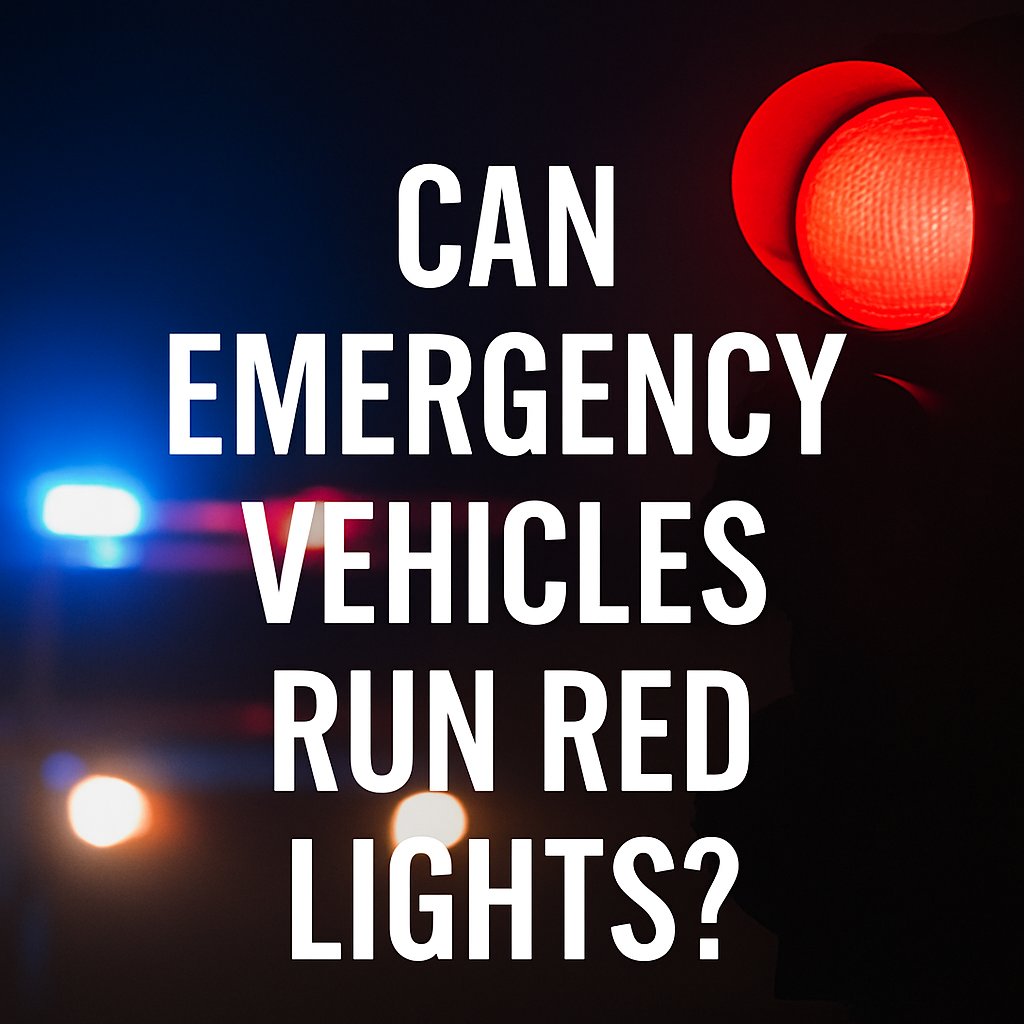We've all been there - sitting at a red light when we hear sirens approaching, and we wonder about the rules that govern emergency vehicles in these situations. Can emergency vehicles run red lights?
Yes, emergency vehicles can legally run red lights when responding to emergency calls with their lights and sirens activated, as permitted by emergency vehicle exemption laws in all 50 U.S. states.
While this answer might seem straightforward, it's important to keep reading because there are specific conditions that must be met for this exemption to apply, and understanding these conditions is crucial for both emergency responders and regular drivers sharing the road with them.
What Conditions Must Emergency Vehicles Meet To Run Red Lights?
Emergency vehicles must meet several specific requirements before they can legally proceed through red lights. First, they must be actively responding to an emergency call - routine travel or non-emergency situations don't qualify. Second, they must have both their emergency lights and sirens activated to warn other drivers. Third, they must slow down enough to ensure it's safe to proceed through the intersection.
Even when these conditions are met, emergency vehicle drivers are still required to exercise due care and ensure that other motorists have noticed them and yielded the right of way.
What Should Regular Drivers Do When Emergency Vehicles Run Red Lights?
When an emergency vehicle approaches an intersection with lights and sirens activated, other drivers have specific legal obligations. They must pull over to the right side of the road when safe to do so, come to a complete stop, and remain stopped until the emergency vehicle has passed. This applies even if you have a green light at the intersection.
It's important to avoid stopping suddenly or blocking the intersection, as this could create additional hazards for both the emergency vehicle and other drivers.
Can Emergency Vehicles Be Held Liable For Accidents At Red Lights?
While emergency vehicles have special privileges, they aren't immune from liability if an accident occurs. If an emergency vehicle driver fails to exercise reasonable care when proceeding through a red light, they and their department could be held liable for any resulting accidents or injuries.
This is why emergency vehicle operators receive specialized training on intersection crossing and are required to follow specific protocols, such as coming to a complete stop before proceeding through red lights in many jurisdictions. The key is balancing the urgency of the emergency response with the safety of all road users.
Do Different Types Of Emergency Vehicles Have Different Rules For Red Lights?
While the basic rules apply to all emergency vehicles, there can be subtle differences in protocols depending on the type of vehicle and service. Ambulances transporting critical patients might proceed through red lights more frequently due to the time-sensitive nature of their calls. Fire trucks, being larger and heavier, typically approach intersections with extra caution due to their longer stopping distance and potential for serious damage in collisions.
Police vehicles have additional considerations, particularly during pursuits, where they must constantly weigh the public safety risks of running red lights against the importance of apprehending a suspect.
What Happens If You Follow An Emergency Vehicle Through A Red Light?
Following an emergency vehicle through a red light, often called "piggybacking," is both dangerous and illegal. While it might be tempting to take advantage of the cleared path, drivers who follow emergency vehicles through red lights can face significant penalties, including hefty fines and points on their license.
The law requires regular vehicles to maintain a distance of at least 500 feet from emergency vehicles responding to calls. This buffer zone ensures emergency vehicles can maneuver safely and prevents civilian vehicles from being caught in potentially dangerous situations at intersections.
Additionally, piggybacking creates confusion for other drivers who may have yielded for the emergency vehicle but aren't expecting additional vehicles to follow through the red light. This can lead to accidents and impede the emergency response.
The Bottom Line For Drivers
Now that you understand the rules and responsibilities surrounding emergency vehicles at red lights, the most important action you can take is to practice the proper pull-over procedure the next time you hear sirens approaching. Instead of waiting until you see the emergency vehicle to decide what to do, make it a habit to safely pull to the right and stop whenever you hear sirens, giving yourself plenty of time to create a clear path. This simple change in behavior can help emergency responders reach their destinations more quickly and safely, potentially saving lives in the process.
Looking for high-quality emergency vehicle lighting? Contact Ultra Bright Lightz for your vehicle lighting needs.


